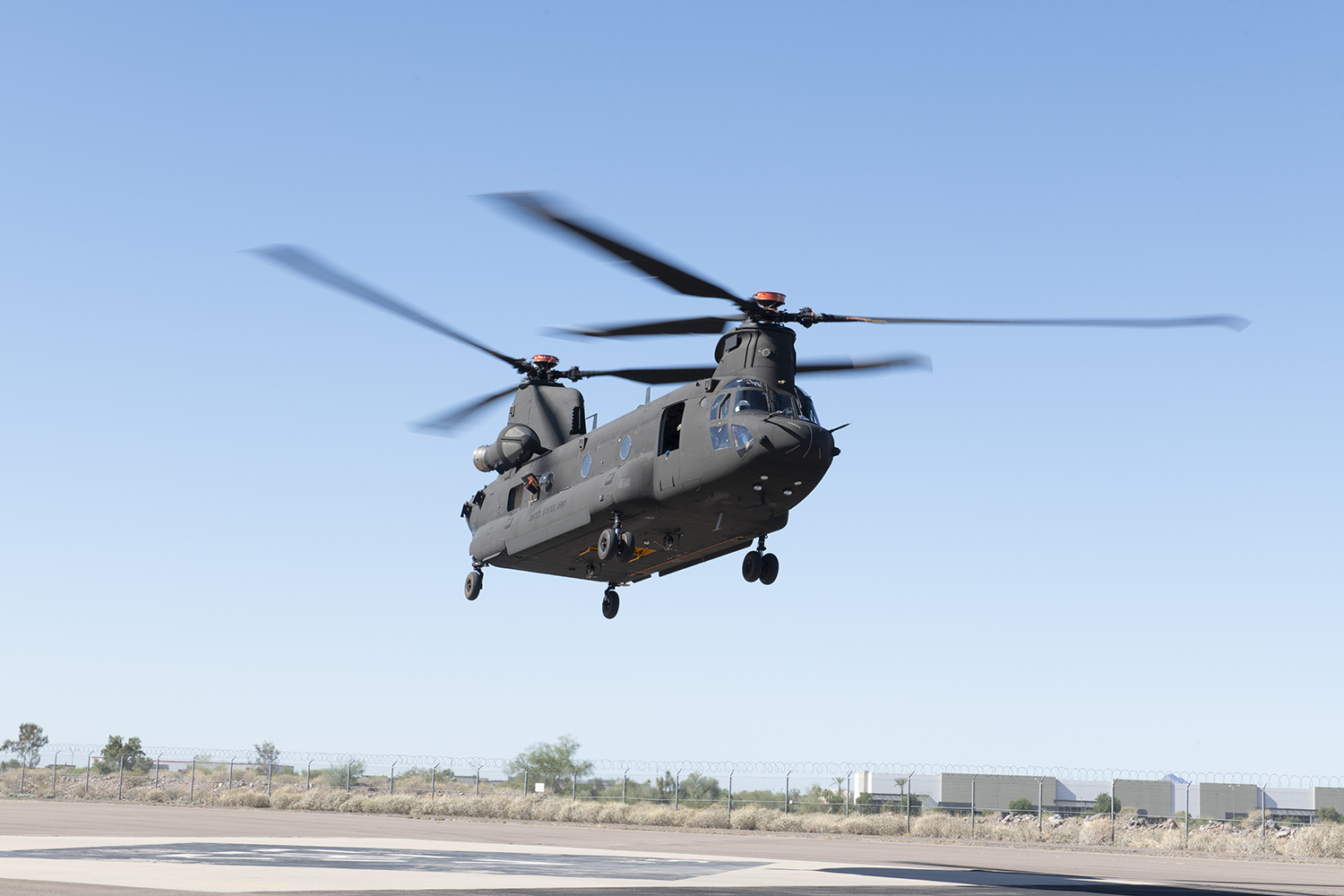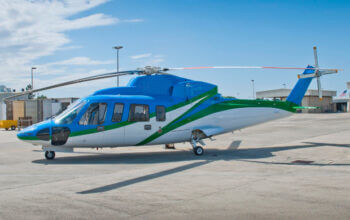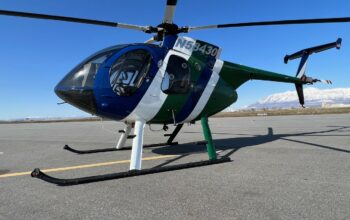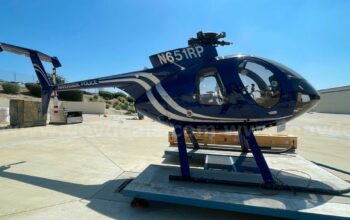Boeing is set to double the pace of flight testing the CH-47 in its souped-up Block II configuration following a legislative vote of confidence that restored advanced-procurement for the Chinook upgrade program.
Boeing has delivered three test aircraft under the engineering and manufacturing development (EMD) phase of the program. One of them is currently in flight test at Boeing’s facility in Mesa, Arizona. A second aircraft is being outfitted with advanced rotor blades this week and should enter flight test within days, according to Andy Builta, vice president of cargo and utility helicopters and H-47 program manager.
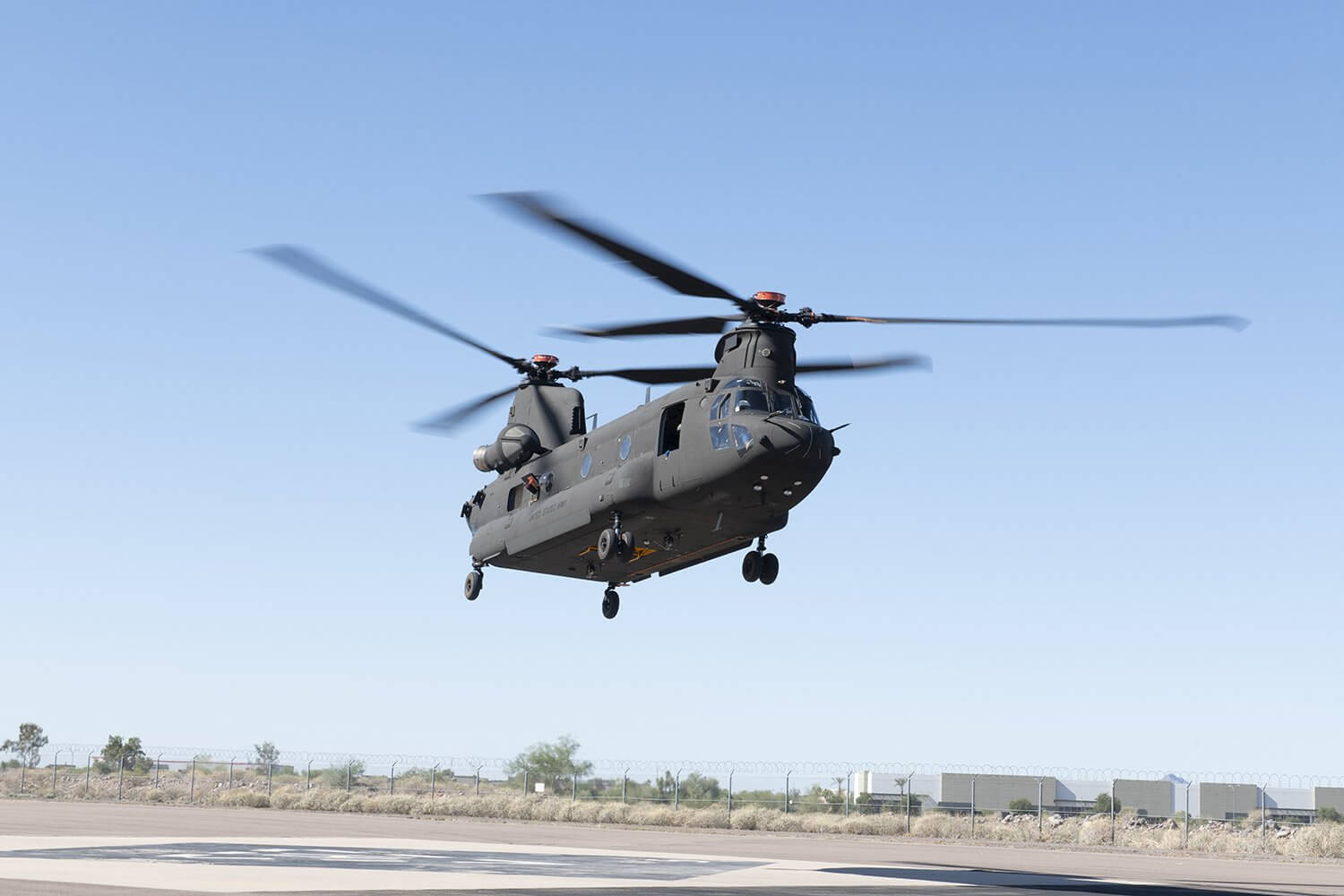
Block II introduces a lighter, more structurally rigid airframe, a beefed-up drivetrain and Boeing’s advanced composite rotor blades (ACRBs) designed to provide a 1,500-pound (680-kilogram) increase in lift.
“We’ve moved through a fairly significant portion of the envelope expansion,” Builta said Feb. 3 in a conference call with reporters. “We’re now focused on continuing to expand that envelope in terms of speeds and maneuvers. . . . Performance has all been according to what the plan was, in terms of performance of the aircraft, the additional lift that comes with those ACRBs as well as the reduced weight of the structure and improved performance of the drivetrain.”
The first EMD aircraft notched more than 10 hours of flight test in the past week and the pace should roughly double as the second Chinook enters the program, Builta said.
“That’s going to double the pace at which we will be able to work through the test points and will give us some flexibility in terms of configuration so that we don’t spend as much downtime reconfiguring from one condition to another,” Builta said. “We’ll be able to diverge the two as we start to work through increasing gross weights, shifting centers of gravity and various other conditions as we continue to expand the flight test program.”
The third Block II-configured aircraft is at Naval Station Patuxent River in Maryland undergoing ground-based electromagnetic interference testing.
The flight test campaign began with low gross takeoff weights and systematically loaded the aircraft down to test performance at higher and higher weights, according to Randy Rotte, director of global sales and marketing for cargo and utility helicopters and Future Vertical Lift.
“We’ve blown past low gross weights, medium gross weight to medium-plus gross weights,” Rotte said. “So far, everything is performing very much as expected. . . . [We] still have a long way to go, but certainly haven’t run into anything that gives us pause at this point.”
EMD is the first phase of the Block II upgrade program and should last for about the next nine months, Builta said. The Army then will take possession and begin limited user testing of the Block II configuration, though Army personnel already are involved in the EMD process in Mesa.
All the data collected during the flight test campaign will inform a decision whether to actually upgrade the Army’s CH-47F fleet, a so-called “milestone C” decision scheduled for fiscal 2021, which begins Oct. 1. Then comes production of the MH-47G Block II operated by U.S. Special Operations Command and then upgrading the Army’s much larger fleet of CH-47Fs.
Boeing is on contract to build 15 MH-47Gs for SOCOM, the first two of which are on the production line in Philadelphia. Both are scheduled for delivery in 2020.
The U.S. Defense Department’s approved budget for fiscal year 2020 restored $25 million in preliminary funds for the Block II upgrade program that the Army wanted to cut from its spending plans. The Army decided it could perform the heavy-lift mission with the current CH-47F until a next-generation replacement was available beyond the 2030s, stoking concerns that Boeing’s Philadelphia production line could wither without new work.
It is not a forgone conclusion that the line is safe. But aside from Block II, potential sales are in the offing to Israel and the U.K. Boeing recently bid for Germany’s new heavy-lift helicopter against Sikorsky’s CH-53K. Israel also is interested in the Chinook to replace its legacy CH-53E fleet.
Thus, the “near-term forecast for the factory” in Philadelphia “is good,” Builta said. “We’ve got lots of different customers. Their aircraft are going through the factory now and over the course of 2020 and 2021. . . . They are trending positively, but you don’t count anything until you have that signature on the dotted line.”
The real test will come in fiscal 2021, when the Army will reach a decision point on whether to proceed with production for its F-model fleet, Rotte said.
“That’s when we have to be prepared to execute,” Rotte said. “Our most important role is to perform, to make sure the aircraft finishes up developmental test, that we have everything in place so that when that decision comes we are ready to execute.”
“I would say we’re feeling a little bit better this year than a year ago, but still a long way to go to ensure that the industrial base to support the Chinook around the world stays healthy,” Rotte said.





